Posts filed under ‘Design Research’
Methods: Personas, have you ever though where they came from?
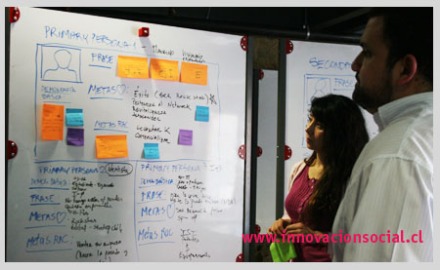 Pic: Workshop I carried out at Stanford with Chilean incubators [CM]
Pic: Workshop I carried out at Stanford with Chilean incubators [CM]
Palo Alto, CA: Since I am here at Stanford as a VR, at the Center for Design Research, I’ve seen students carry out methods like “Brainstorming“, “Rapid Prototyping” and “Personas“. I would like to comment on the “personas” tool. Students learn how to make them, but do they know where they come from? It is in my belief that students or recipients of this teaching should learn the sources of these techniques. Why? Because you get to know the place where to search for more information or for understanding the rationale behind it. This situation would enable the learners to reconfigure their way of applying the methods yet in a more informed way. 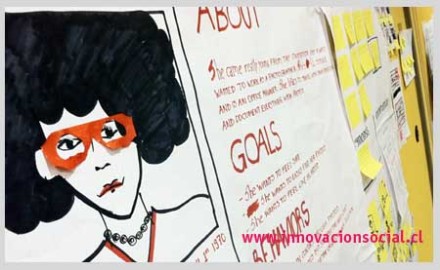 Pic: Cooper
Pic: Cooper
SO WHERE DO PERSONAS COME FROM?
Making archetypes coming from ethnographic or qualitatively inspired research is not something new to the fields of Anthropology or Sociology. But it was Alan Cooper, the “humanizer of technology”, so he indicates in his website, the one that “pioneered the use of personas as practical interaction design tools to create high-tech products that address user’s needs” . (more…)
Electronic Colloquium on Design Thinking Research
 Source: ECDTR
Source: ECDTR
This amazing source of information on Design Research is available online at the “Electronic Collquium on design Thinking Research” .
The idea of this colloquium is to foster the widespread and interchange of ideas coming from research done in the Design Thinking area. One of the most interesting things is that it has an explicit interdisciplinary focus, that not many scientific journals have. As they state: “the main focus of Design Thinking Research and the ECDTR is to understanding why Design Thinking has been so successful in the past and how this successful method can be supported and further enhanced in the future.” Check it out by clicking here.
A Framework for Design Education: Download past key papers
The Design and Technology Association [DATA] and “The Design Education Research Group” at Loughborough University‘s Design School have put together critical papers from the 70’s and 80’s from individuals like Bruce Archer [Prof.Design Research Royal College of Arts in London], in order to build the basis of what has been written about design education. We need to know our past in order to plan our future. Download the papers for free here.

AIGA Design/Education conference: Yay! the content is up
 The AIGA conference on education and design just ended. Hosted by NC State’s Graphic Design program, it became to be the start point for a serious redefinition of the Designer’s practice. Some of the speakers and participants included: John Thackara [Doors of Perception, Social Economies and Sustainability], Dori Tunstall [Swinburne University, Design Anthropologist], Rick Robinson [E-Lab, Sapient, Continuum– Collaboration], Sharon Poggenpohl [Ex IIT, Hong Kong Poytechnic, DEsign Integrations and a Design Research culture from scratch], Shelley Evenson [Ex Carnegie Mellon, now Microsoft Social – Service Design], David Small [MIT Media Lab, now Small Design Firm], (more…)
The AIGA conference on education and design just ended. Hosted by NC State’s Graphic Design program, it became to be the start point for a serious redefinition of the Designer’s practice. Some of the speakers and participants included: John Thackara [Doors of Perception, Social Economies and Sustainability], Dori Tunstall [Swinburne University, Design Anthropologist], Rick Robinson [E-Lab, Sapient, Continuum– Collaboration], Sharon Poggenpohl [Ex IIT, Hong Kong Poytechnic, DEsign Integrations and a Design Research culture from scratch], Shelley Evenson [Ex Carnegie Mellon, now Microsoft Social – Service Design], David Small [MIT Media Lab, now Small Design Firm], (more…)
Interview to Michelle Sadler-Chilean medical anthro: collaboration, public policies and designers doing research part 2
 Figure 1: My students [some are now colleagues]: Giovanna Roa, Margarita Ruiz-Tagle, Gabriela Warner & Nicole Cristi organizing an applied qualitative research activity.
Figure 1: My students [some are now colleagues]: Giovanna Roa, Margarita Ruiz-Tagle, Gabriela Warner & Nicole Cristi organizing an applied qualitative research activity.
ANTHROPOLOGICAL RESEARCH & THE QUALITATIVE DATA DRIVEN APPROACH: TOOLS FOR DISCOVERY AND INNOVATION
For Michelle Sadler, it is important to go with open questions into the field. With a broad thinking: “If you go with a rigid frame, related to the possibilities you have in the head, you don’t allow the innovation or the novelty to arise. You don’t go thinking out of the box. You need to see from other perspectives”. For her, it is important to communicate with people. She has changed the word patient for user to leave some common assumptions [in the biomedical area] behind. “…Many times, what happens in research is that researchers or people go with an assumption, with a pre-designed idea, so instead of going to raise new things, you go to check on what you want to find”. This anthropologist believes people can find whatever they want to because reality is complex, so the researcher has to be careful with the type of questions he addresses. “A research should be more open, it should allow that people tell you everything without placing categories a priori. The categories should raise in situ”. It is evident for her that it is a limitation of the quantitative approach, overall in the surveys, as they abolish the possibility of creating or obtaining new insights. Still she rectifies the idea of using the quantitative approach to tackle particular sections of the study. It should depend of the research design, but it is important to note that a qualitative approach can use small samples and yet achieve very relevant and innovative findings.
COLLABORATION
Cooperation is present in all the areas of Sadler’s work. Apart from collaborating internationally, as an academic in University, she collaborates with academics from other areas, social scientists and medicine. On her consultant firm she does share work with psychologists and sociologists. And in both of these areas, academy and private practice, she generates deliverables working with designers and also biomedical personnel: “in the FONIS (Fondo Nacional Investigación en Salud) were doctors, midwives, designers, architects, photographers, social workers, a super mixed group from social sciences, health and arts”. Methods for her rely in the assumption that you have to connect with people: “…try to connect in a more intimate way”. She believes in micro strategies: “the macro strategies don’t talk to people, they talk to a group that is too large and heterogeneous. They don’t touch the fiber, they don’t say: this is important to you because I understand what you are thinking, I communicate with you”. For her research, Michelle quotes a lot. It is relevant because she believes people can identify themselves with another person’s experience: “ Ah, this person went through the same I am”. It has to do with her case orientation to elaborate the manuals. People can see how other have changed and have gone through the same difficulties. She uses ethnography: “Ethnographic work implies transfer yourself to another context, being there, it’s a combination of techniques. It is observing, chatting, looking for material formats people use, meaningful contexts”.
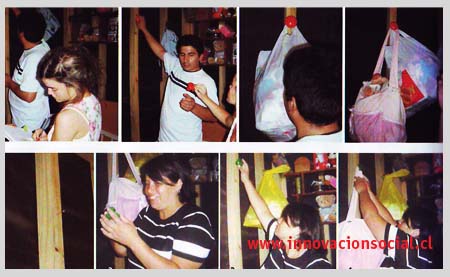 Figure 2: Designer Margarita Ruiz-Tagle her product development and testing as a student at PUC
Figure 2: Designer Margarita Ruiz-Tagle her product development and testing as a student at PUC
DESIGNERS AND RESEARCH
For Michelle, it is essential to connect with people to design solutions for (more…)
Interview to Michelle Sadler-Chilean medical anthro: collaboration, public policies and designers doing research part 1
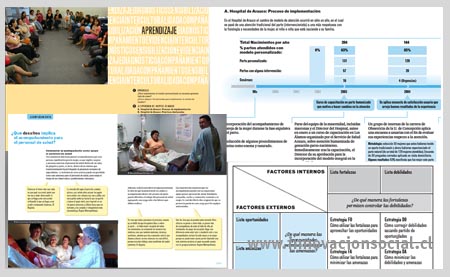 Figure 1: Pages from Michelle’s FONIS Manual
Figure 1: Pages from Michelle’s FONIS Manual
MICHELLE SADLER, TRANSFORMING THE LATIN AMERICAN MEDICAL BACKGROUND [Interview done in 11.2009]
Michelle Sadler is well known in Latin America because of her work on “medicalization”, overall of childbirth. I particularly know her because of our “related research” for the public policy related to the first infancy protection program “Chile Crece Contigo” [See related post]. Michelle puts the standards high, in research and in the understanding of people for the design of public programs and policies. This young professor at Universidad de Chile, master in Medical Anthropology from Oxford University, has several publications on this matter.  Her work is ideologically applied. For translating her anthropological research into concrete applications she works essentially with people from arts, design and biomedical backgrounds. An example of this is the successful manual for “Revision of personalized Child Delivery”, a FONIS project that entails information for all the parties engaging in the modality of empowering of women during childbirth [Download]. Not a very different desire from the women under attention in the “public system”. They just needed a service that accomplished the same standards or possibility the private clinics in Chile offer. This particularly well-designed and friendly guide for the biomedical community shows one format in which design-anthropology alliances can work for public and social scenarios. It was done by working with stakeholders and all of the parties “touched” by the program. This interview is about Michelle’s work and her appreciations over collaboration, anthropology and social sciences understanding communities, public policies, applied work and design engaging research. Michelle was already giving classes and being part of research projects at Universidad de Chile when she left for Oxford. Today, she gives classes at the faculty of medicine and the social sciences faculty, where she also is involved in basic research and publications. On the other hand, Michelle also works as an entrepreneur. She created an interdisciplinary consultancy firm called “Cultura Salud” (Health Culture).
Her work is ideologically applied. For translating her anthropological research into concrete applications she works essentially with people from arts, design and biomedical backgrounds. An example of this is the successful manual for “Revision of personalized Child Delivery”, a FONIS project that entails information for all the parties engaging in the modality of empowering of women during childbirth [Download]. Not a very different desire from the women under attention in the “public system”. They just needed a service that accomplished the same standards or possibility the private clinics in Chile offer. This particularly well-designed and friendly guide for the biomedical community shows one format in which design-anthropology alliances can work for public and social scenarios. It was done by working with stakeholders and all of the parties “touched” by the program. This interview is about Michelle’s work and her appreciations over collaboration, anthropology and social sciences understanding communities, public policies, applied work and design engaging research. Michelle was already giving classes and being part of research projects at Universidad de Chile when she left for Oxford. Today, she gives classes at the faculty of medicine and the social sciences faculty, where she also is involved in basic research and publications. On the other hand, Michelle also works as an entrepreneur. She created an interdisciplinary consultancy firm called “Cultura Salud” (Health Culture).
APPLIED ANTHROPOLOGY HELPS YOU TO UNDERSTAND HOW TO CREATE A BETTER SERVICE FOR PEOPLE, BETTER POLICIES…
An academic with a very applied approach on the Chilean health context According to Sadler, anthropology is in a moment of arousal in Chile and the World: (more…)
Tools: Designing interaction, “making” participation happen for public policies and other enterprises
 Figure 0: Card sorting and information display from my students [Kyun Hur, Celise Bravo-Taylor NC State]
Figure 0: Card sorting and information display from my students [Kyun Hur, Celise Bravo-Taylor NC State]
As I’ve pointed out in this blog before, designers have the skills to provide tangible solutions to interaction problems. In an interview made to her, professor Amy Smith from MIT indicated: “I’m often frustrated by conferences where the results are just presentations, posters and papers. The output of this conference will be real devices, things that people can use. Participants will be able to take prototypes home with them and start testing them”. This, to me, is absolutely true. And that is one of the interests in why other disciplines are engaging with design: “the making of ideas”. We can see business schools engaging the so-called “design thinking” in Stanford’s D-School [Engineering, social sciences & business around design] the MBA at California College of the Arts or Design Thinking at Rotman School of management in the University of Toronto . There are even some schools interested in working out their public policies as a service experiences driven by design. Why is this? Why are business and PP people getting in touch with design?  Figure 01: Game I designed as a researcher in Procorp
Figure 01: Game I designed as a researcher in Procorp
Well, design has this articulated way to bring ideas into tangible solutions. But what if we don’t use it for understanding and providing solutions for consumers? What if we use it to work with social problems? Well, we are already doing it. Design is effective in putting down ideas, creating a common language between individuals and articulating needs and goals through “making” things tangible.This design quality of “making” can also be used for research and for participation enhancement.
DESIGN AT THE SERVICE OF PEOPLE, LET’S LISTEN TO SANDERS
In my own work, I’ve design methods and tools to communicate effectively with participants. Psychologist and anthropologist Elizabeth Sanders has been working in generative tools , for collective creativity. She was a pioneer in participative methods in the design field. For her, design should serve people, not markets. She talks about co-designing and how to elicit the design abilities that is inherent to every human being.  She defines a four-step evolution graphic to reflect the new approach to people. The first step (see image) understands designers as users, this, related to the 1980’s approach related to the Xerox Parc interest in achieving user friendly product. Later, as she sees it, there are design-serving adapters. (more…)
She defines a four-step evolution graphic to reflect the new approach to people. The first step (see image) understands designers as users, this, related to the 1980’s approach related to the Xerox Parc interest in achieving user friendly product. Later, as she sees it, there are design-serving adapters. (more…)
Tools: Democratizing visualization
Post in English & Español
 ENG/ Since I’m working on data visualization and display, I’ve been exposed to a lot of different projects regarding this topic. I actually attend every Friday to the visualization seminar at Duke, organized by Rachael Brady from the Visualization technology Group . The last session the “Many Eyes” [an IBM project] guys were invited: Fernanda Viégas [originally Brazilian] and Martin Wattenberg. Two great guys that have done great work in visualizing information and making open source tools for all the rest of us, mortals, to use. This is the most important part for me, the creation of “open source” knowledge that is just a very strong quality of computer scientists. When will we learn from that and let our egos out of the conversation? They’ve done it. I believe, that democratizing innovation is one of the correct ways towards development.
ENG/ Since I’m working on data visualization and display, I’ve been exposed to a lot of different projects regarding this topic. I actually attend every Friday to the visualization seminar at Duke, organized by Rachael Brady from the Visualization technology Group . The last session the “Many Eyes” [an IBM project] guys were invited: Fernanda Viégas [originally Brazilian] and Martin Wattenberg. Two great guys that have done great work in visualizing information and making open source tools for all the rest of us, mortals, to use. This is the most important part for me, the creation of “open source” knowledge that is just a very strong quality of computer scientists. When will we learn from that and let our egos out of the conversation? They’ve done it. I believe, that democratizing innovation is one of the correct ways towards development. 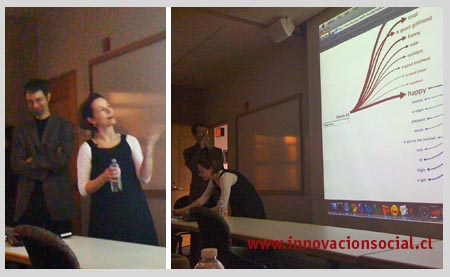
 Very inspiring work, I invite you to check on the site and get to see what these tools can do for your research. In my case, it has been useful to identify thematic clusters in textual analysis [by co-ocurrence], yet I believe it’s more powerful outputs are related to the display of quantitative or statistical data.Check their consultancy: Flowing Media, data has something to say.
Very inspiring work, I invite you to check on the site and get to see what these tools can do for your research. In my case, it has been useful to identify thematic clusters in textual analysis [by co-ocurrence], yet I believe it’s more powerful outputs are related to the display of quantitative or statistical data.Check their consultancy: Flowing Media, data has something to say.  ESP/ Desde que trabajo (more…)
ESP/ Desde que trabajo (more…)
Methods: Some tools to communicate in entertaining ways with individuals
 Figure 1: Project carried at Procorp , including neighbors in a urban planning project.
Figure 1: Project carried at Procorp , including neighbors in a urban planning project.
As mentioned before: Multivocality is vital for design and community projects. But not only in the social sector but also business-wise. It is important that we treat social projects with the same quality standards as we do with business projects. This is why I commonly test research methods and information displays in both kind of projects. (more…)
Giving the space for people to talk, don´t confuse participation and collaboration
Frame 1: projects I carried out at Procorp, Santiago, Chile 2008. We involved the communities in defining solutions for a municipality project.
‘Ninety five percent of the world’s designers focus all of their efforts on developing products and services exclusively for the richest ten percent of the world’s customers’ (Polak 2007:19). This reality is followed by what is exhibited in design journals for the design community, or publications made for the general public. We should reflect in the impact design could make in people’s lives, yet, it should move towards a socially responsible field. How can we integrate communities to the process? Amy Smith at MIT D-Lab has said “I believe very strongly that solutions to problems in the developing world are best created in collaboration with the people who will be using them”. Though, as I mentioned before, I don’t like using the “developing world” terminology. Collaborative research [see Lassiter for collaborative ethnography] can be used in applied work for achieving several objectives. For example, it can make a difference to address a Community Development project. As the authors in Community Building in the 21st Century argue it is important to involve the local communities in the research processes for achieving sustainability, long-term impact and self-effective communities. When the community is involved and invests effort and resources, the individuals participating become part of the change. Thereof they are more likely to embrace it and contribute to future development and challenges. Throughout my experience, I’ve come to firmly believe this. I have seen this in Community Development problems related to: poverty, public health and estate housing. These pictures are from some projects that included individuals in the design process. In different degrees of collaboration. In the private sector, we can also say that collaborative research is useful to take charge of all the different views and requirements of the people “touched” by the project. In the case of organizational change assessment, it is important to understand the “uncovered” relations, goals and expectations of the people involved. There are things that can be elicited just under a collaborative point of view. If people feel represented in any way by the interventions, if they feel that they were “heard” it is more likely that they welcome change. You need to give the space for people to talk.
 Frames 2 & 3 show a research for pre-investment report done for the integrated protection system for early childhood in Chile: “Chile Crece Contigo” , which has been indicated by the United Nations Economic and Social Council as a development strategy that works [Go to source]. Our group, in charge of understanding and proposing the parts of the public policy that defined the products that could be recommended in a maternity, integrated the different communities that would be “touched” in our process. [Go to Report] Participation of midwives Hospital Clínico U.Chile & Consultorio Talagante.
Frames 2 & 3 show a research for pre-investment report done for the integrated protection system for early childhood in Chile: “Chile Crece Contigo” , which has been indicated by the United Nations Economic and Social Council as a development strategy that works [Go to source]. Our group, in charge of understanding and proposing the parts of the public policy that defined the products that could be recommended in a maternity, integrated the different communities that would be “touched” in our process. [Go to Report] Participation of midwives Hospital Clínico U.Chile & Consultorio Talagante.
DON’T CONFUSE COLLABORATION WITH MULTIVOCALITY OR INSTRUMENTAL PARTICIPATION
So what is collaboration? Or may I say, what is REAL collaboration? Today collaboration and collaborative methods may be considered buzzwords. How (more…)


